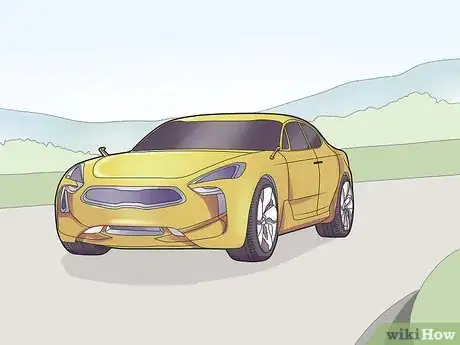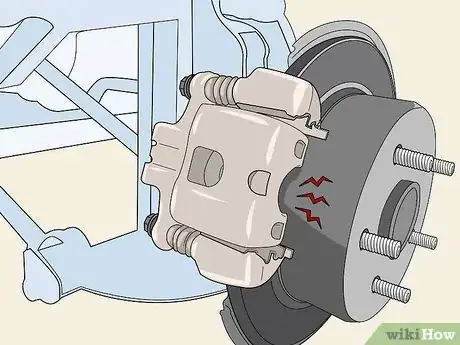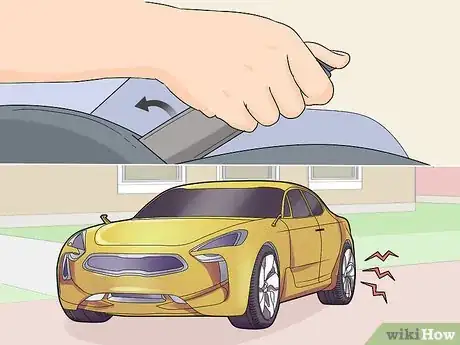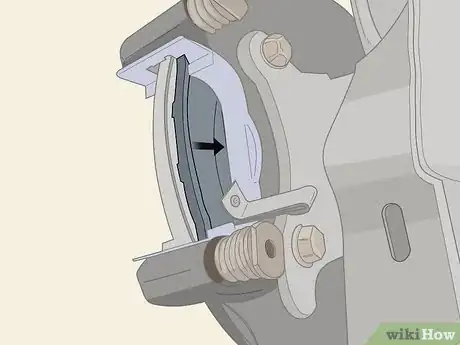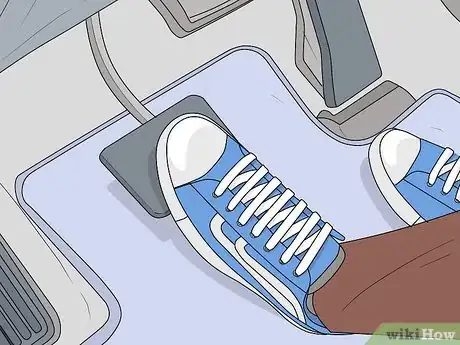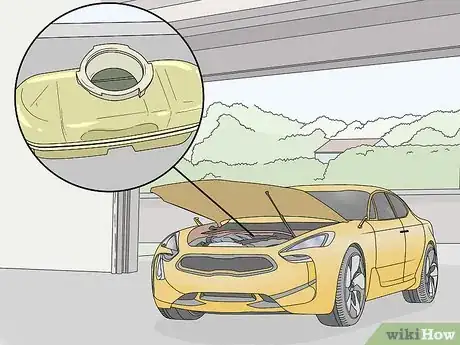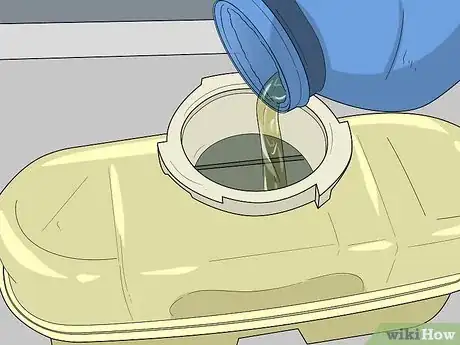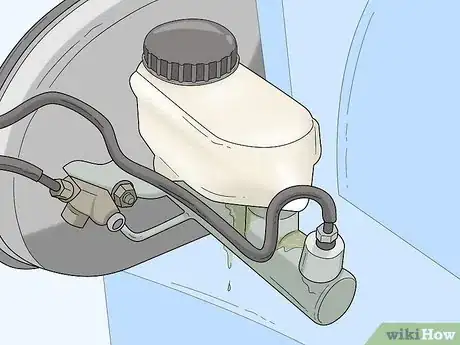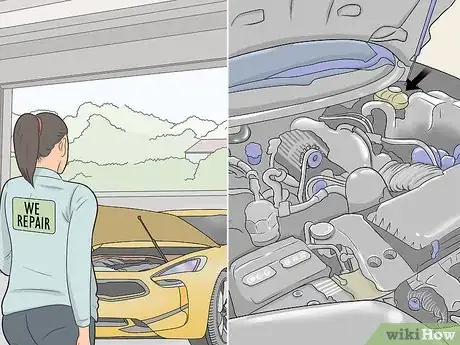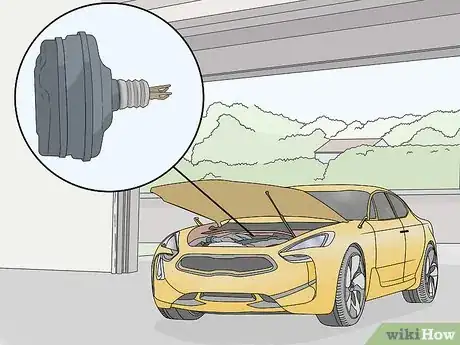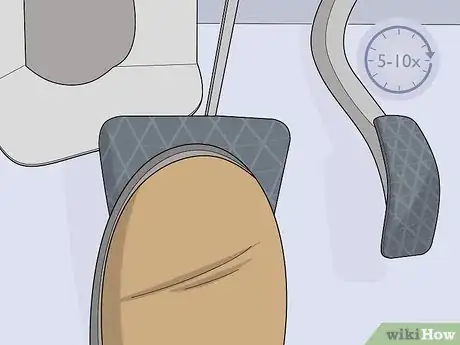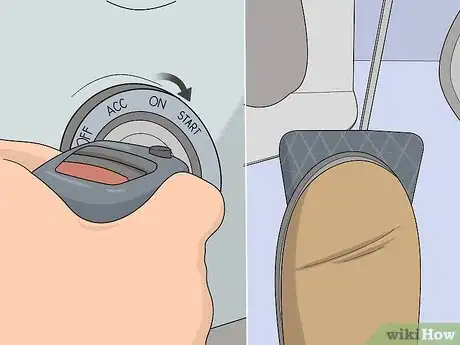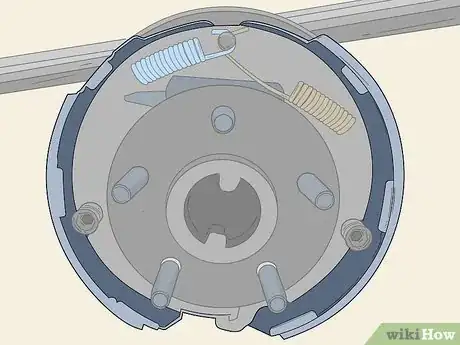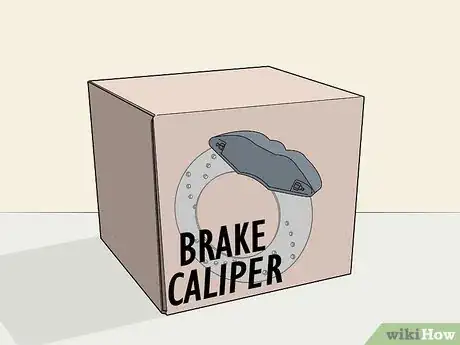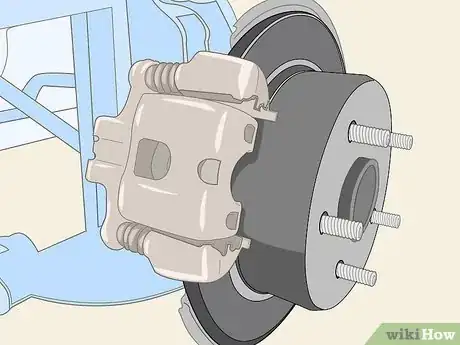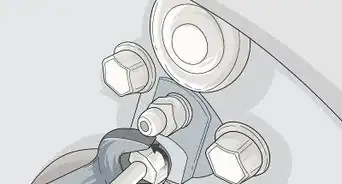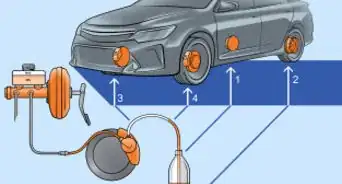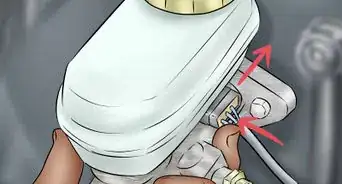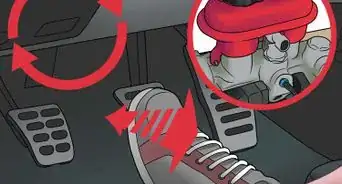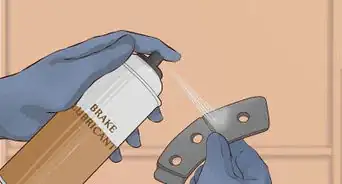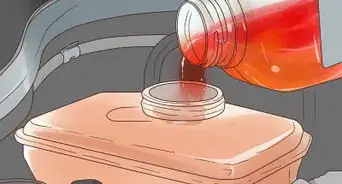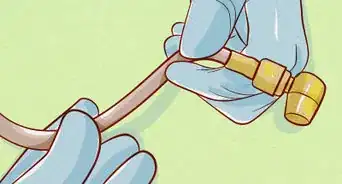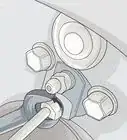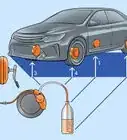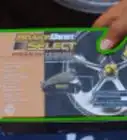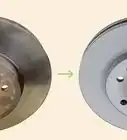This article was co-authored by Duston Maynes. Duston Maynes is an Automotive Repair Specialist at RepairSmith. Duston specializes in leading a team that handles a variety of automotive repairs including replacing spark plugs, front and rear brake pads, fuel pumps, car batteries, alternators, timing belts, and starter motors. Duston holds an Associate’s degree in Automotive/Diesel Technology from The Universal Technical Institute of Arizona and is a Certified Diagnostic Technician and Automobile Mechanics Technician through BMW STEP. RepairSmith received The 2020 Big Innovation Award by Business Intelligence Group and The Startup of the Year by the American Business Awards. RepairSmith was also included in Built in LA’s 50 Startups to Watch and The Business Intelligence Group’s 52 Names Leading the Way in Customer Service. RepairSmith offers in-home services to provide car owners convenient and complete auto repair everywhere.
There are 17 references cited in this article, which can be found at the bottom of the page.
This article has been viewed 326,580 times.
The brake system is the most important safety feature of your vehicle. Unfortunately, there are many things that can go wrong with your brakes. All these problems require immediate attention, but first you have to find out exactly what's going on with your brakes. If you hear a screeching, metallic sound when you apply your brakes, the pads are probably wearing out and need replacement. If your brake pedal feels soft and doesn't stop the car right away, you may have a fluid leak or air in the brake system. Finally, if your pedal feels too stiff, the vacuum booster could be failing. If you discover any of these problems, take your car to a mechanic as soon as possible to have them fixed.
Steps
Fixing Noisy Brake Pads
-
1Drive slowly to see if the screeching goes away. A bit of screeching in your brake pedals is normal and usually nothing to worry about. It is common in the morning when your car is still warming up, or if there was recently some rainy weather and the pads are wet. Drive around your neighborhood slowly and brake normally. If the noise goes away after a few minutes, then your brake pads were still just warming up.[1]
-
2Inspect the brake pads if the sound continues after the car warms up. Brake pads are designed to start screeching or squealing when they’re worn down as metal presses against metal.[2] If the car has warmed up and you still hear a screeching noise, then you probably need new brake pads.[3]
- The sound when your brake pads need replacing is also different from normal warming up noises. A metallic grinding noise indicates worn out brake pads.[4]
- You probably won’t notice much trouble stopping even if your brake pads are very worn down, so don’t rely on this as an indicator on whether you need new brakes or not. The grinding metallic sound is the indicator.
Advertisement -
3Replace your rear brakes if the pads squeal when you apply the e-brake. Even if you know that the brake pads need replacement, you may not be able to tell which ones are going bad. For a quick trick, isolate your rear brakes. Drive slowly, around 15 mph, and apply your e-brake. Since the e-brake only triggers the back brakes, screeching indicates that the back brakes are the ones that need work.[5]
- Make sure no cars are behind you when you do this experiment.
- Remember that this trick only tells you if the rear brakes need work, but doesn’t tell you if the front ones are worn out too. If you replace your back brakes and still hear screeching, then the front ones need work as well.
-
4Install new brake pads to stop the screeching. Once you’ve confirmed that the brake pads need replacement, install new pads to fix the problem. Either take the car to a mechanic, or if you know how to, replace the pads yourself.[6]
- Remember to get pads that fit your vehicle. Check your owner’s manual if you aren’t sure what kind of brake pads your car uses.
- Drive around and apply your brakes. The screeching should stop after the pad replacement. If you still notice brake problems, take the car to a mechanic for an inspection.
Finding the Source of Soft Brakes
-
1Check your brake fluid if the pedal feels squishy. A squishy or soft brake pedal means that you can press the pedal further than you should be able to or even all the way down to the floor. The car may take longer to stop as well. This usually means that there is a problem with the hydraulic brake system. The 2 most common causes for this are a leak in the brake line and air in the system.[7] Investigate further to locate the issue.[8]
- Don't drive the car with a squishy brake pedal. This is an urgent problem.
- If you suddenly notice your brake pedal go soft while you’re driving, pull over immediately. This could indicate a ruptured brake line or similar failure of the brake system.
-
2Open the hood and check the fluid level. First check if you have enough brake fluid in the system.[9] Open your hood and find the master cylinder reservoir, which is where the brake fluid is stored. This is a white tank on top of a metal tube, usually located towards the back of the engine bay on the driver’s side. Open the cap and see if the brake fluid reaches the fill line.[10]
- Park your car on a level surface to get an accurate brake level reading.
- If you can’t find the master cylinder, check your car owner’s manual for a diagram.
- If your car was recently running, parts under the hood will be hot. Don’t touch anything except the master cylinder to avoid burns.
-
3Refill the brake fluid if its level is low. If your brake fluid level is below the fill line, add new fluid. Most cars use DOT 3 or DOT 4 fluid. Fill the master cylinder reservoir up to the fill line and replace the cap.[11]
- If you aren’t sure what type of brake fluid your car uses, consult your owner’s manual.
-
4Pump the brakes with the car off. Get into the driver’s seat and start pumping your brakes to see if there is any improvement. If they feel better, the problem was probably low brake fluid. But continue searching to find the cause of the low fluid. Pumping the brakes pushes fluid into the hydraulic system and reveals any potential leaks.[12]
- You could turn the car on for this step, but this causes the liquid to expand. If you have a leak, liquid may spill out quickly.
-
5Check the brake lines for any leaking fluid. If you have a leak in your brake lines, fluid will seep out when you press the brakes. After pumping the brakes a few times, start searching for leaks. Brake fluid is light gold in color. If you see liquid like this under your hood, around or under your car, or in the car, it indicates a brake leak.[13]
- First look under the hood. Check the housing around the master cylinder for leaking fluid.
- Follow the brake line out of the master cylinder and into the hood of the car. Do a visual check for any fluid coming out.
- Then check for drips or pools underneath the car. Look especially around the insides of the tires. Fluid sometimes runs down the tires if there’s a leak.[14]
- Also look inside the car, just behind the brake pedal. Sometimes fluid leaks here.
-
6Have the car fixed immediately if you have a brake fluid leak. If you see brake fluid leaking, this is a serious problem that has to be fixed immediately. If you know how, fix the leak yourself. Otherwise, get the car to a mechanic as soon as possible.[15]
- If the leak is coming from the master cylinder, replace it promptly.
- Do not drive a car with a brake fluid leak to a mechanic. You could lose your brakes completely on the way. Call a tow truck instead.
- Avoid driving the car at all until the leak is fixed.
-
7Bleed the brake system if the pedal is soft and there is no leak. If you don’t find a brake fluid leak, then there is probably air in the brake system. It also inhibits brake performance. Bleed air out of the system to improve your performance.[16]
- The bleeding process includes pumping the brakes, jacking the car up, and releasing the bleed valve on each tire's brakes. Follow each step carefully to complete the procedure.
- The tires need to be bled in a specific order. Check your owner’s manual for the correct bleeding order.
Dealing with a Hard Brake Pedal
-
1Check your vacuum booster if the brake pedal feels hard. The vacuum booster is another component of the brake system that’s housed under the hood. A faulty or malfunctioning booster is the primary cause of a hard break pedal. If you feel like you can’t push your pedal down very far or the pedal feels too stiff, the vacuum booster is probably behind it. Test the pedal out to see if the booster is working.[17]
-
2Pump the brakes a few times with the engine off. Get into the driver’s seat and don’t turn the car on. Pump the brake pedal 5-10 times. You’ll notice the pedal start stiffening up. Keep pressing until you can’t push the pedal down much anymore.[18]
- Don’t force the brake pedal down. Press it normally. When you can’t press it down with normal pressure anymore, then this step is complete.
-
3Start the engine while holding the brake down to see if it moves. When you can’t move the pedal anymore, press down on it with normal pressure. Then start the car while pressing down. If the pedal releases and pulls back down, then the vacuum booster is working normally. If not, then the booster probably needs to be replaced.[19]
-
4Replace the brake vacuum booster if it isn’t working properly. If the pedal doesn’t loosen up after you start the car, then the brake booster is failing. If you know how to, replace the booster yourself. Get a replacement from an auto parts store, remove the old booster, and install the new one. Otherwise, bring your car to a mechanic to have the booster replaced professionally.[20]
- In most cars, the master cylinder blocks the vacuum booster. Remove this first.
- Go inside your car and tilt your steeling wheel all the way up and remove the car's knee blocker. Reach inside and detach the clip connecting your brake pedal to the vacuum booster. Unscrew the 4 bolts holding the booster down from inside the car, then go back under the hood and remove the hoses connected to the booster. Slowly slide it out of position.
- Slide the new booster in and hook the hoses into it. Then go inside the car, tighten the nuts, and reconnect the brake pedal. Put the steering wheel and knee blocker back into position.
- Don’t try to drive the car until the booster is fixed. Call a tow truck to bring it to the mechanic.
Diagnosing Other Issues
-
1Replace the brake shoes if your drum brakes are screeching. Brake shoes are similar to brake pads, except shoes are on drum-style brakes. The signs that shoes need replacing are the same as when pads need replacing. Usually the shoes make a screeching, metallic sound to indicate they're worn down. Take the car to a mechanic to have the shoes replaced, or do it yourself if you know how.[21]
- Worn-out brake shoes may also pull the car to one side when you press the pedal down.
-
2Get new brake calipers if your brake pads show uneven wear.[22] If your brake pads are all worn-down on one side but look new on the other, then the likely culprit is your caliper. An old caliper leans to the side and puts uneven pressure on the pads. Eventually, this reduces the brake effectiveness. If you see uneven wear on your brake pads, have your calipers replaced.[23]
- Fluid sometimes leaks from worn-out calipers as well. This could cause a brake fluid leak.
- Replacing brake calipers is a big job. If you don't think you have enough skill to do it yourself, let a professional do the job.
-
3Install new brake rotors if your car wobbles while it's stopping. The brake rotors are the areas that pads press against. When the rotor is worn-out, its shape warps and the pads press down unevenly. This results in shaking and wobbling when you press the pedal down. If you've noticed the problem, you may need new rotors.[24]
- If the rotors are bad, the car will shake at any speed when you hit the brakes.
- The shaking will also happen consistently when you hit the brakes. If it only happened once, you may have been on uneven ground.
Expert Q&A
-
QuestionWhy does my car pull to the right when I hit the brakes?
 Ed BeeryEd Beery is an Automotive Specialist and the Owner of InTechgrity Automotive Excellence based in Denver, Colorado. With more than eight years of experience, he specializes in providing maintenance and repair services for both individuals and companies. Ed and the InTechgrity Automotive Excellence Team are approved by the American Automobile Association (AAA) for repairs and are Automotive Service Excellence (ASE) certified.
Ed BeeryEd Beery is an Automotive Specialist and the Owner of InTechgrity Automotive Excellence based in Denver, Colorado. With more than eight years of experience, he specializes in providing maintenance and repair services for both individuals and companies. Ed and the InTechgrity Automotive Excellence Team are approved by the American Automobile Association (AAA) for repairs and are Automotive Service Excellence (ASE) certified.
Automotive Specialist This may be caused by poor brake adjustment or uneven brake fluid pressure in the system.
This may be caused by poor brake adjustment or uneven brake fluid pressure in the system. -
QuestionWhat can cause a vehicle to pull in one direction?
 Ed BeeryEd Beery is an Automotive Specialist and the Owner of InTechgrity Automotive Excellence based in Denver, Colorado. With more than eight years of experience, he specializes in providing maintenance and repair services for both individuals and companies. Ed and the InTechgrity Automotive Excellence Team are approved by the American Automobile Association (AAA) for repairs and are Automotive Service Excellence (ASE) certified.
Ed BeeryEd Beery is an Automotive Specialist and the Owner of InTechgrity Automotive Excellence based in Denver, Colorado. With more than eight years of experience, he specializes in providing maintenance and repair services for both individuals and companies. Ed and the InTechgrity Automotive Excellence Team are approved by the American Automobile Association (AAA) for repairs and are Automotive Service Excellence (ASE) certified.
Automotive Specialist This may be caused by a caliper not releasing, a pad binding, or an issue with an emergency brake not releasing.
This may be caused by a caliper not releasing, a pad binding, or an issue with an emergency brake not releasing. -
QuestionWhy does my steering wheel shudder when I brake?
 Ed BeeryEd Beery is an Automotive Specialist and the Owner of InTechgrity Automotive Excellence based in Denver, Colorado. With more than eight years of experience, he specializes in providing maintenance and repair services for both individuals and companies. Ed and the InTechgrity Automotive Excellence Team are approved by the American Automobile Association (AAA) for repairs and are Automotive Service Excellence (ASE) certified.
Ed BeeryEd Beery is an Automotive Specialist and the Owner of InTechgrity Automotive Excellence based in Denver, Colorado. With more than eight years of experience, he specializes in providing maintenance and repair services for both individuals and companies. Ed and the InTechgrity Automotive Excellence Team are approved by the American Automobile Association (AAA) for repairs and are Automotive Service Excellence (ASE) certified.
Automotive Specialist This can indicate warped or torn rotors or unevenly worn brake pads. Extremely hot rotors can cause warping, while inconsistent pad wear may be caused by poor installation, bad retention springs, or issues with the brake calipers.
This can indicate warped or torn rotors or unevenly worn brake pads. Extremely hot rotors can cause warping, while inconsistent pad wear may be caused by poor installation, bad retention springs, or issues with the brake calipers.
Warnings
- Never delay in getting your car's brakes fixed. You could suddenly lose your brakes and get into a car accident.⧼thumbs_response⧽
- Be very careful with brake fluid, as it will strip off your car's paint incredibly easily. If any fluid gets on your paint, flush it off with water as soon as possible.⧼thumbs_response⧽
- Always wear gloves and goggles when working on your car.⧼thumbs_response⧽
References
- ↑ https://www.popularmechanics.com/cars/car-technology/a3092/fix-squeaky-brakes/
- ↑ Duston Maynes. Automotive Repair Specialist. Expert Interview. 23 June 2021.
- ↑ https://www.popularmechanics.com/cars/car-technology/a3092/fix-squeaky-brakes/
- ↑ Ed Beery. Automotive Specialist. Expert Interview. 19 November 2021.
- ↑ https://youtu.be/BEx5SXrgAF0?t=287
- ↑ https://www.popularmechanics.com/cars/car-technology/a3092/fix-squeaky-brakes/
- ↑ Ed Beery. Automotive Specialist. Expert Interview. 19 November 2021.
- ↑ https://axleaddict.com/auto-repair/Brake-Problems-Answers-to-5-Common-Brake-Problems-with-a-car
- ↑ Ed Beery. Automotive Specialist. Expert Interview. 19 November 2021.
- ↑ https://www.military.com/off-duty/autos/auto-repair-checking-your-master-cylinder.html
- ↑ https://youtu.be/1XJm5-sOyhY?t=188
- ↑ https://youtu.be/BEx5SXrgAF0?t=127
- ↑ https://youtu.be/BEx5SXrgAF0?t=150
- ↑ Ed Beery. Automotive Specialist. Expert Interview. 19 November 2021.
- ↑ https://axleaddict.com/auto-repair/Brake-Problems-Answers-to-5-Common-Brake-Problems-with-a-car
- ↑ https://youtu.be/BEx5SXrgAF0?t=180
- ↑ https://youtu.be/BEx5SXrgAF0?t=16
- ↑ https://youtu.be/1XJm5-sOyhY?t=247
- ↑ https://youtu.be/VK4lowH7kQE?t=104
- ↑ https://youtu.be/aiIvBVsiczY?t=61
- ↑ https://shop.advanceautoparts.com/r/car-projects/how-to-replace-brake-shoes
- ↑ Duston Maynes. Automotive Repair Specialist. Expert Interview. 23 June 2021.
- ↑ http://www.safebraking.com/faq-why-do-i-need-new-brake-calipers/#:~:targetText=Most%20brake%20calipers%20do%20not,sticking%20and%20leaking%20goes%20up.
- ↑ https://youtu.be/6RQ9UabOIPg?t=7
About This Article
If you have trouble with your car brakes, there are a few simple things to check before you go to a mechanic. If you have a persistent screeching or grinding noise from your brakes, check the pads to see if they’ve worn out. You may need to replace them. If your brakes are soft and you need to press them hard to slow down, you’ll need to fix them immediately, since this can be dangerous. Open the hood of your car and check the brake fluid reservoir for leaks or insufficient fluid. You may also spot a leak under the car or pedal after pumping the brakes a few times. If you have a fluid leak, get it fixed by a professional mechanic. If your brakes are hard to press, check the vacuum booster under the car’s hood, which is the most common cause. For more tips, including how to replace your vehicle’s brake shoes and rotors, read on!
